Lesson Plans and Educational Resources
Explore the life and legacy of President Kennedy through the Museum’s online lesson plans and educational resources. Our offerings allow students to examine the Kennedy presidency and the 1960s through Museum collections and interactive activities for middle and high school classes.
Middle School
Mini Lesson: Dr. Martin Luther King and the Montgomery Story
In December 1957, the comic book Martin Luther King and the Montgomery Story was published to share the events surrounding the Montgomery Bus Boycott. Students will use this comic book as inspiration to create their own narrative about a significant event in their life. 1
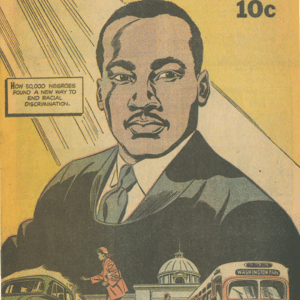
Debating the 1960 Election
The 1960 televised presidential debates brought major change to political campaigns. Examine historic and current presidential debates to learn about their importance in discussing important national issues before researching and conducting a live debate in the classroom.2
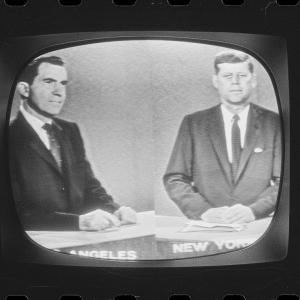
History Hashtag
This information organizer helps students conduct research and develop ideas while working on history-based assignments. Using a series of questions organized into nine boxes, students can visualize the information they have collected and questions they want to continue to research.3
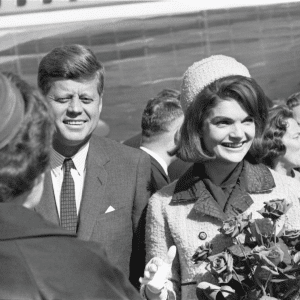
Conservation
President Kennedy signed legislation to create sixteen national park units preserving natural and cultural resources throughout the United States. He established three of the ten National Seashores as part of the National Park Service in Massachusetts, California and Texas. Students will explore the importance of conservation and preservation by researching national and state parks in their home state.4
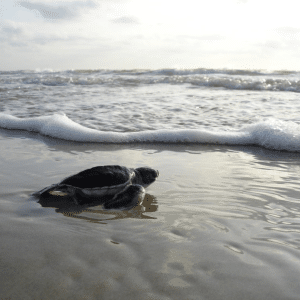
History of the Holidays at the White House
Since its first residents in 1800, the White House has seen many first family holiday gatherings, celebrations and traditions. Students will learn about the history of the holidays at the White House and create a holiday tradition to share with the American public.5
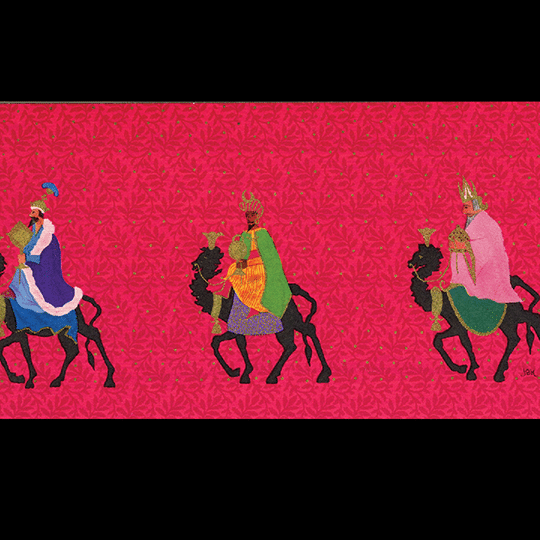
Voting 101: Reading a Ballot
On November 8, 1960, voters in the United States participated in a general election where they cast ballots
for federal, state and local candidates and issues including selecting the 35th President of the United States. Students will learn how to read and understand a ballot for the general election.6
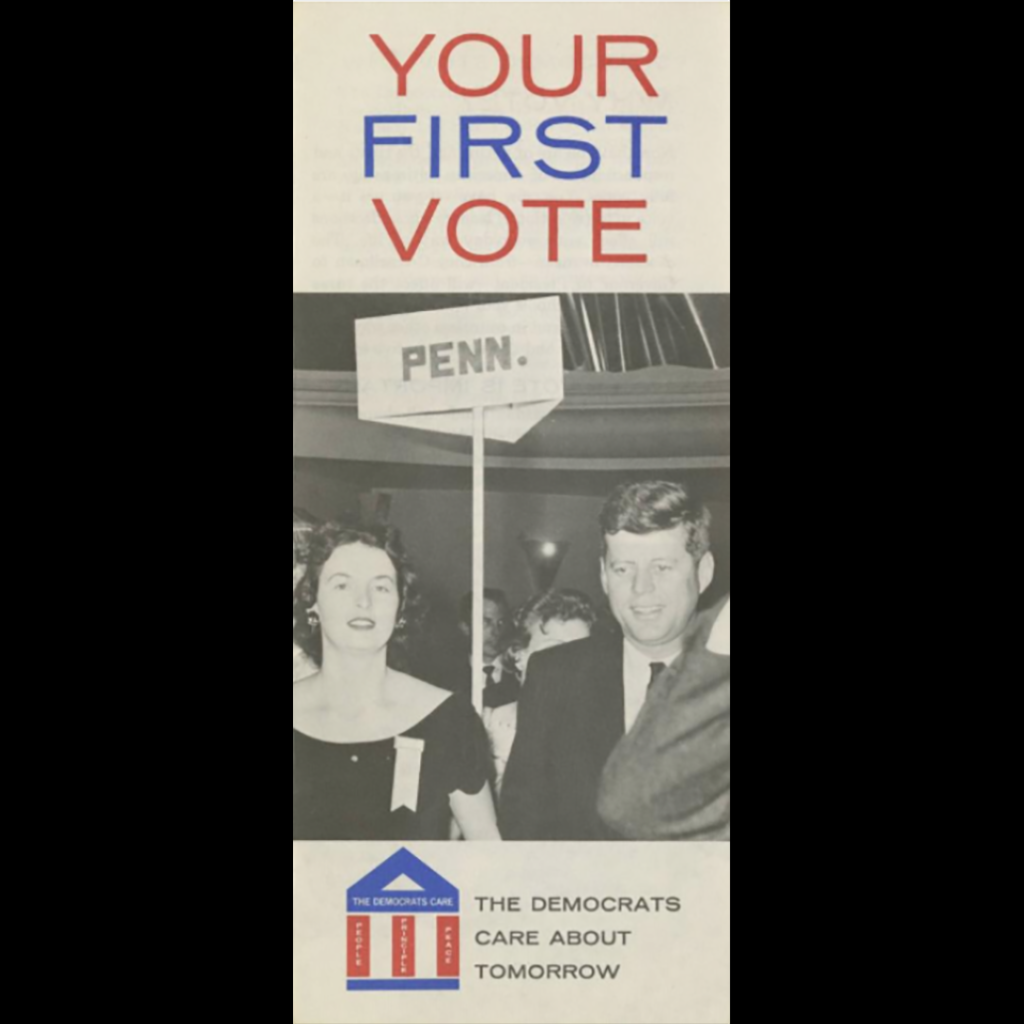
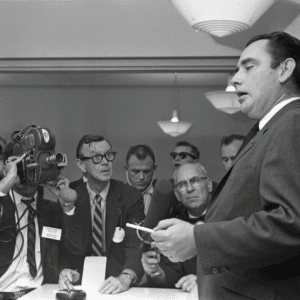
Mini Lesson: Writing about National Narratives
Dallas Times Herald women’s editor Vivian Castleberry covered President Kennedy’s visit to Dallas at the Dallas Trade Mart, documenting the anticipation of the President’s arrival and the reaction to the news of the assassination. Students will analyze Castleberry’s article for the Sault Ste. Marie Daily Star before creating a narrative about a nationally significant event in their own lifetime.7
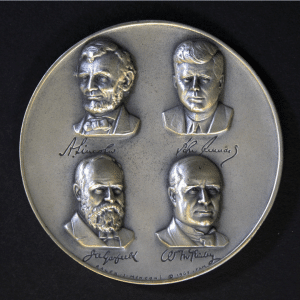
Mourning a President: Comparing Poetry, Presidential Deaths of 1865 and 1963
In response to the assassinations of President Abraham Lincoln and President John F. Kennedy, Walt Whitman and Jorge Luis Borges wrote poems mourning the two leaders. Compare the two poems through close reading before finding other poems, music and art that share the same themes and/or purpose.8

Eyewitness to History
Use the Museum’s Eyewitness to History: An interactive Map of the Kennedy Motorcade to see and hear from eyewitnesses along the motorcade route through Dallas. Examine how different perspectives of the same event contribute to telling the whole story using interviews, home movies and photographs.9
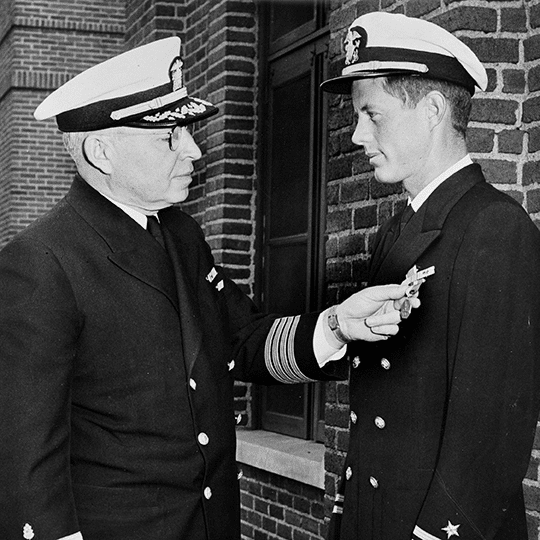
PT-109 Heroism and Leadership
In August 1943, U.S. patrol boat PT-109 sank after a collision with the Japanese destroyer Amagiri. This event helped shape Kennedy’s leadership skills and was highlighted throughout his campaign for president. Students will learn about the event by analyzing letters from PT-109 commander Lt. John F. Kennedy and Kohei Hanami, the commander of the Amagiri.10

President Kennedy through the Eyes of an Artist
Explore major milestones in President Kennedy’s life through a series of 71 paintings by self-taught artist Bernadine Stetzel. Students will analyze and interpret artwork through activities focused on historical timelines, discussion and writing.11
High School
Mini-Unit: The Poverty Issue
During the 1960s, movements including the 1968 Poor People’s Campaign reflected growing concern for the number of people living in poverty throughout the United States. In this unit, students will research trends in poverty statistics, cost of living, minimum wage and rates of inflation from 1960-2022 and practice their financial literacy skills. 12

John F. Kennedy’s Presidential Inaugural Address
This lesson allows students to analyze John F. Kennedy’s inaugural speech and apply the concepts of liberty and freedom to their personal civic involvement. Students will incorporate these ideals into a persuasive essay based on their analysis and include elements of the speech and the rhetorical techniques of the speech writer.13
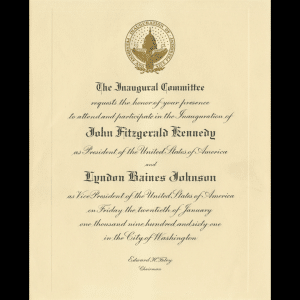
State of Texas vs. Lee Harvey Oswald Mock Trial
Lee Harvey Oswald was arrested and charged with the assassination of President John F. Kennedy on November 22, 1963, but was shot and killed before he could stand trial. This lesson plan allows students to study evidence in the assassination and conduct a mock trial of Lee Harvey Oswald.14
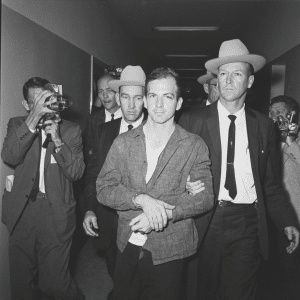
History Hashtag
This simple and creative teaching tool allows students to articulate their research on a particular topic and interpret their findings to an audience. The History Hashtag allows students to express their research in a written format and a visual interpretation, appealing to different learning styles.15

Voting 101: Reading a Ballot
On November 8, 1960, voters in the United States participated in a general election where they cast ballots
for federal, state and local candidates and issues including selecting the 35th President of the United States. Students will learn how to read and understand a ballot for the general election.6

The Equal Pay Act of 1963
In 1961, President Kennedy established the President’s Commission on the Status of Women to evaluate and make recommendations to improve the legal, civic, economic and social status of American women. Students will analyze official reports, letters and newspaper articles to chart the pay gap between men and women from 1960 through today.17
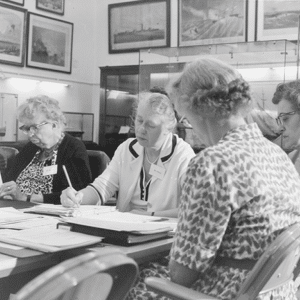
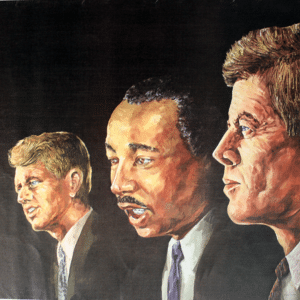
Senator Robert F. Kennedy on Dr. Martin Luther King Jr.
Senator Robert F. Kennedy made two speeches responding to the assassination of Dr. Martin Luther King Jr. on April 4, 1963. Students will analyze, compare and contrast the two sets of remarks while examining the impact of each speech.18

Debating the 1960 Election
The four televised Kennedy-Nixon debates in fall 1960 allowed the two presidential candidates to share their views on issues impacting the nation. Explore the issues of the 1960s and their modern-day equivalents and debate them in the classroom.19

Mourning a President: Comparing Poetry, Presidential Deaths of 1865 and 1963
In response to the assassinations of President Abraham Lincoln and President John F. Kennedy, Walt Whitman and Jorge Luis Borges wrote poems mourning the two leaders. Compare the two poems through close reading before finding other poems, music and art that share the same themes and/or purpose.20
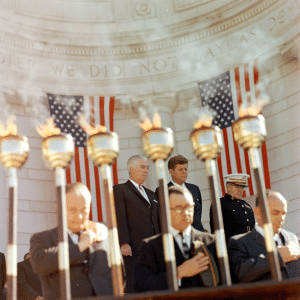
The American Flag: A Symbol of Unification and Pride
Through analysis of Flag Day and National Flag Week proclamations, students will determine how past presidents have connected the American flag to national events to celebrate patriotism. Students will use the information gathered to create a proclamation of their own.21
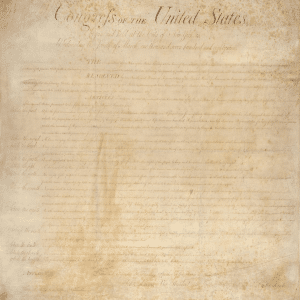
President Kennedy and the Bill of Rights
Explore how the Bill of Rights impacted events surrounding the assassination of President Kennedy. Students will analyze events and Museum objects and answer a series of questions to help connect them to the first ten constitutional amendments.22
Other Resources
Image Credits
- Martin Luther King and The Montgomery Story comic book, 1957. The Sixth Floor Museum at Dealey Plaza Collection. ↩︎
- Third televised Kennedy-Nixon presidential debate, October 13, 1960. U.S. News & World Report Magazine Photograph Collection (Library of Congress). ↩︎
- President and First Lady Kennedy at Dallas Love Field, November 22, 1963. Dallas Times-Herald Collection / The Sixth Floor Museum at Dealey Plaza. ↩︎
- Green sea turtle on Padre Island National Seashore. Image courtesy of National Park Service. ↩︎
- The Journey of the Magi Christmas card by Jacqueline Kennedy, 1963. The Sixth Floor Museum at Dealey Plaza Collection ↩︎
- “Your First Vote” 1960 campaign brochure put out by the Democratic National Committee.The Sixth Floor Museum at Dealey Plaza Collection ↩︎
- Deputy press secretary Malcolm Kilduff announces the death of President Kennedy to reporters, November 22, 1963. Dallas Times Herald Collection / The Sixth Floor Museum at Dealey Plaza. ↩︎
- Medallion honoring four assassinated presidents. Art Richardson Collection / The Sixth Floor Museum at Dealey Plaza. ↩︎
- Presidential motorcade in Dallas, November 22, 1963. Richard Clark Collection / The Sixth Floor Museum at Dealey Plaza. ↩︎
- Photographer unknown, White House Photographs. John F. Kennedy Presidential Library and Museum, Boston. ↩︎
- 1960 Convention. Artist Bernadine Stetzel. Oil on canvas. Bernadine Stetzel Collection / The Sixth Floor Museum at Dealey Plaza ↩︎
- Poor Peoples Campaign pin, 1968. The Sixth Floor Museum at Dealey Plaza Collection. ↩︎
- 1961 Inauguration ceremony invitation. Fred Fuston Collection / The Sixth Floor Museum at Dealey Plaza. ↩︎
- Lee Harvey Oswald in Dallas Police custody, November 22, 1963. Bill Winfrey, photographer, Tom C. Dillard Collection,
The Dallas Morning News / The Sixth Floor Museum at Dealey Plaza. ↩︎ - President and First Lady Kennedy at Dallas Love Field, November 22, 1963. Dallas Times-Herald Collection / The Sixth Floor Museum at Dealey Plaza. ↩︎
- “Your First Vote” 1960 campaign brochure put out by the Democratic National Committee.The Sixth Floor Museum at Dealey Plaza Collection ↩︎
- Meeting of the President’s Commission on the Status of Women, June 16, 1962. Franklin D. Roosevelt Presidential Library & Museum. ↩︎
- Painting of Robert F. Kennedy, Martin Luther King Jr and President John F. Kennedy. Gregory Thornton Collection / The Sixth Floor Museum at Dealey Plaza. ↩︎
- Third televised Kennedy-Nixon presidential debate, October 13, 1960. U.S. News & World Report Magazine Photograph Collection
(Library of Congress). ↩︎ - Medallion honoring four assassinated presidents. Art Richardson Collection / The Sixth Floor Museum at Dealey Plaza. ↩︎
- Veterans Day ceremonies at Arlington National Cemetery Memorial Amphitheater, November 11, 1963. Cecil Stoughton, White House Photographs, John F. Kennedy Presidential Library and Museum, Boston. ↩︎
- The Bill of Rights, National Archives. ↩︎

